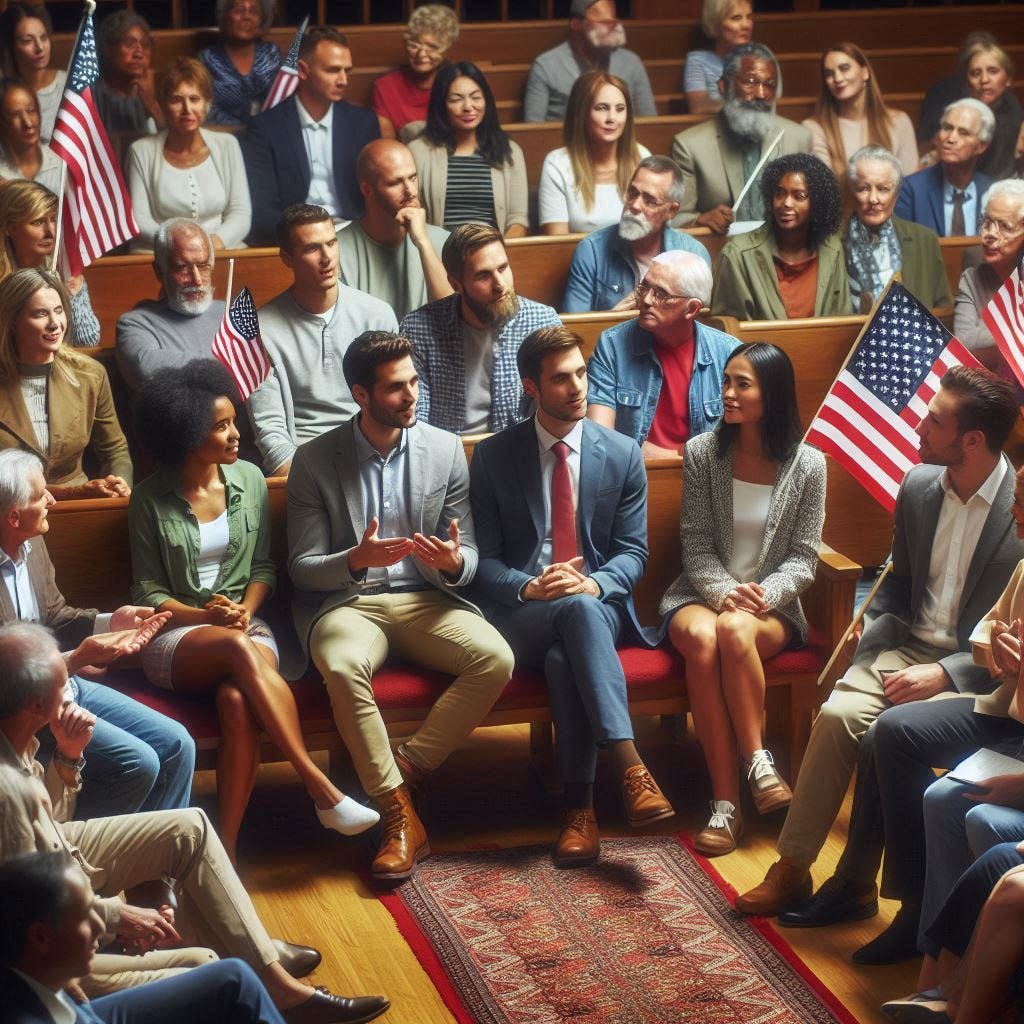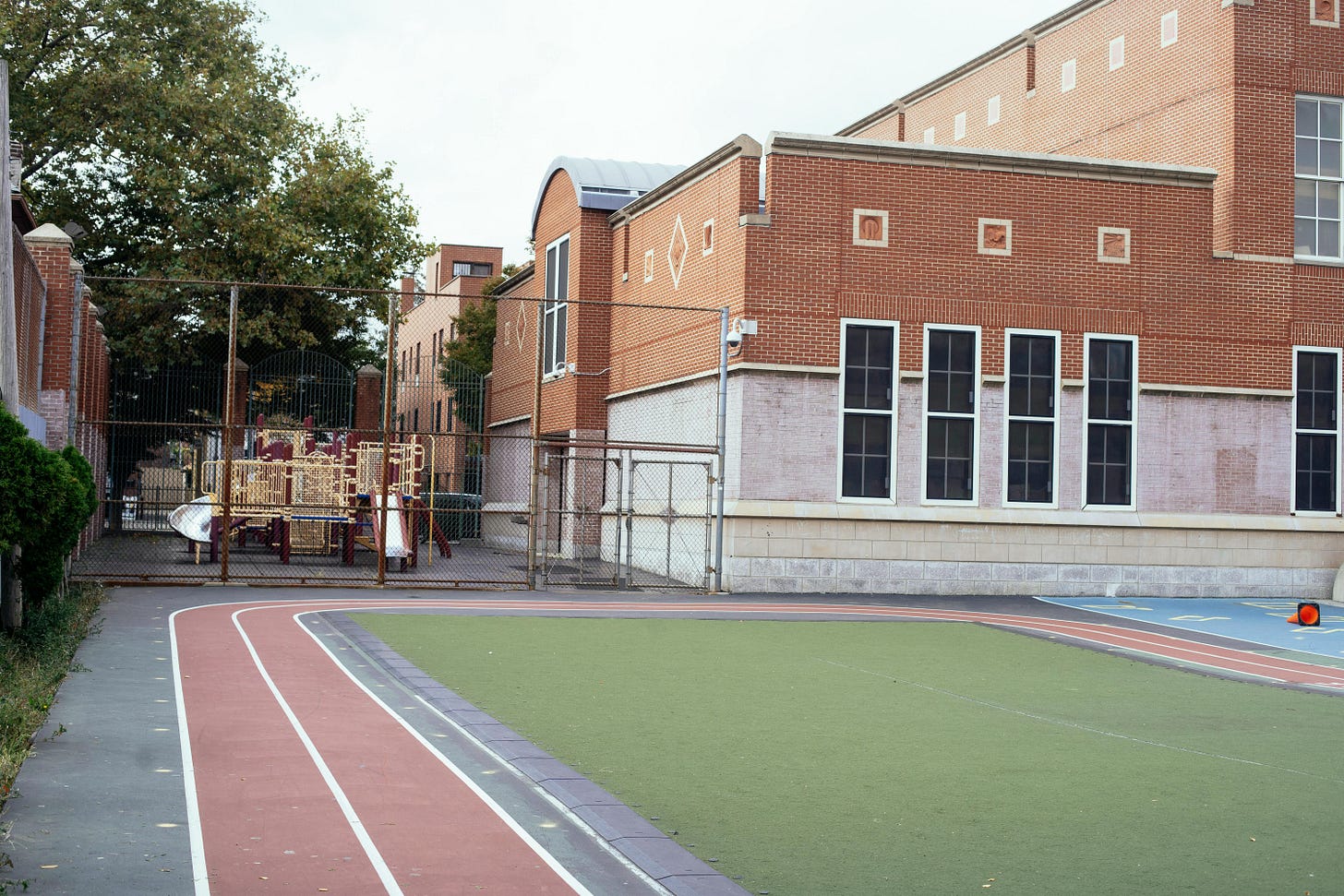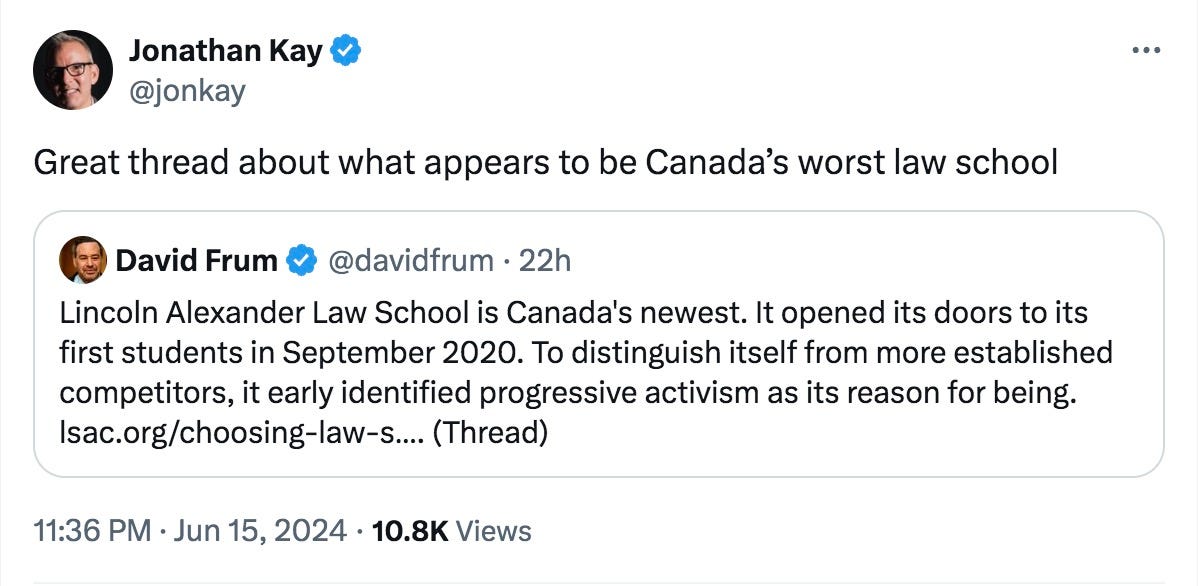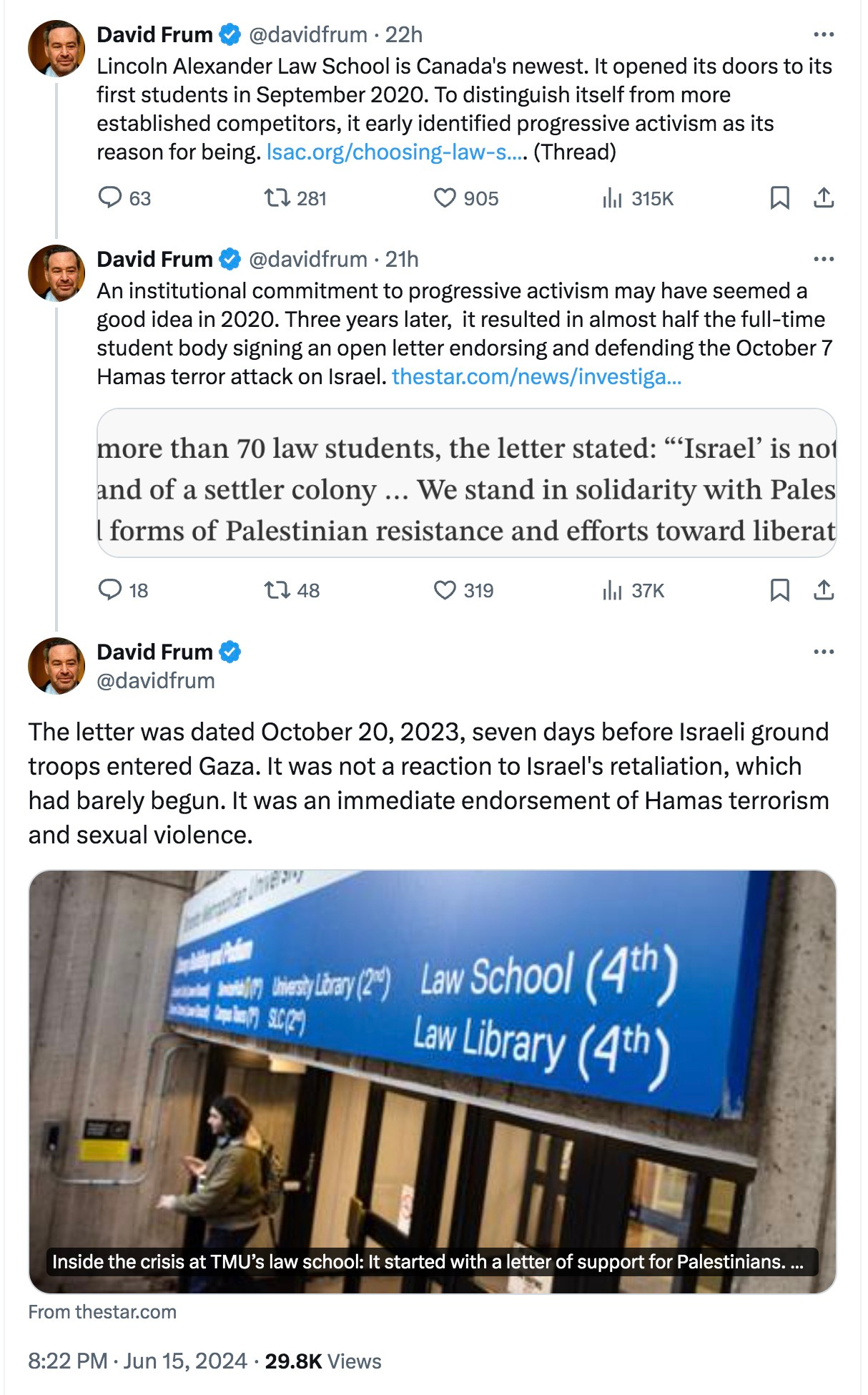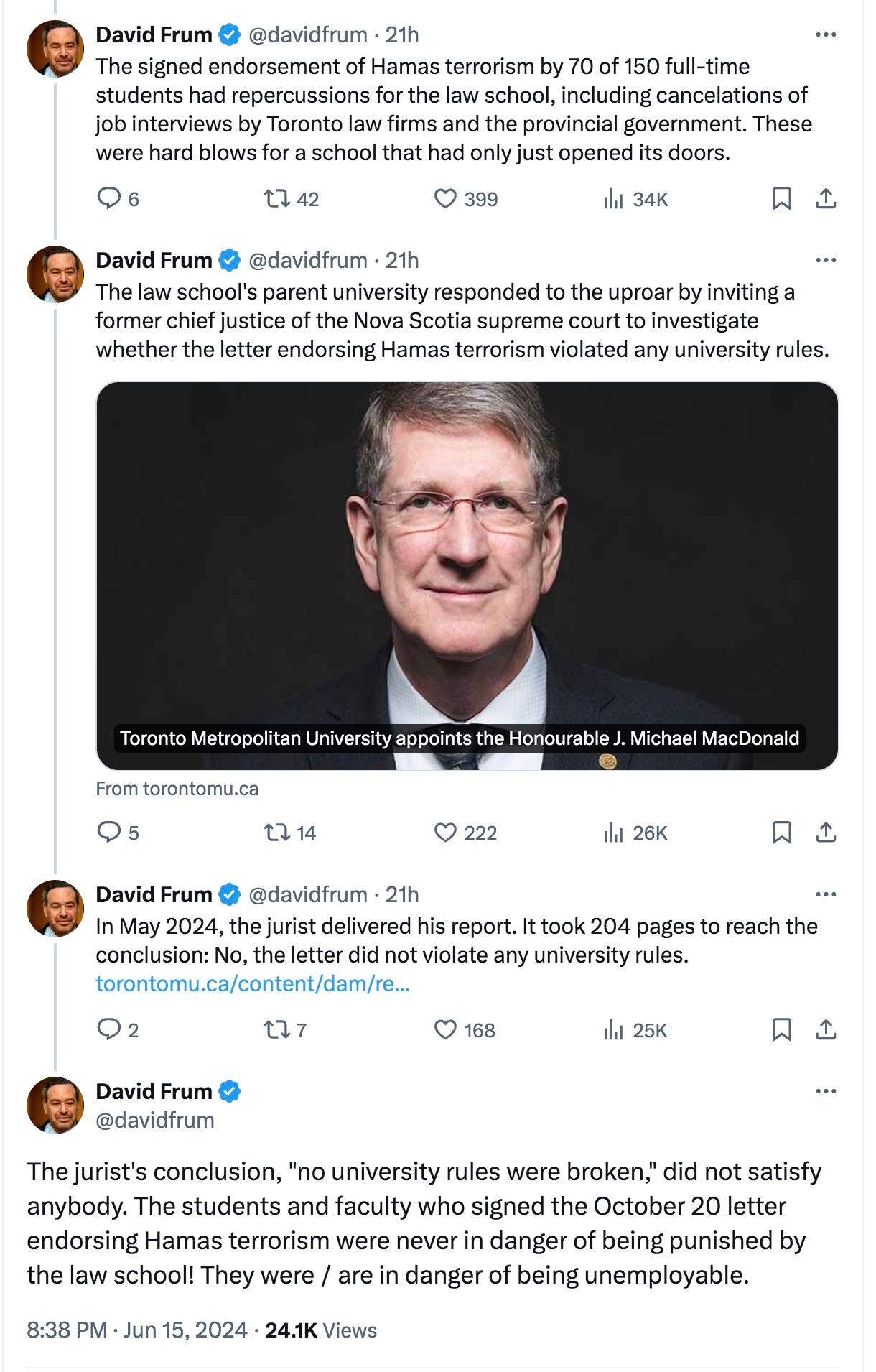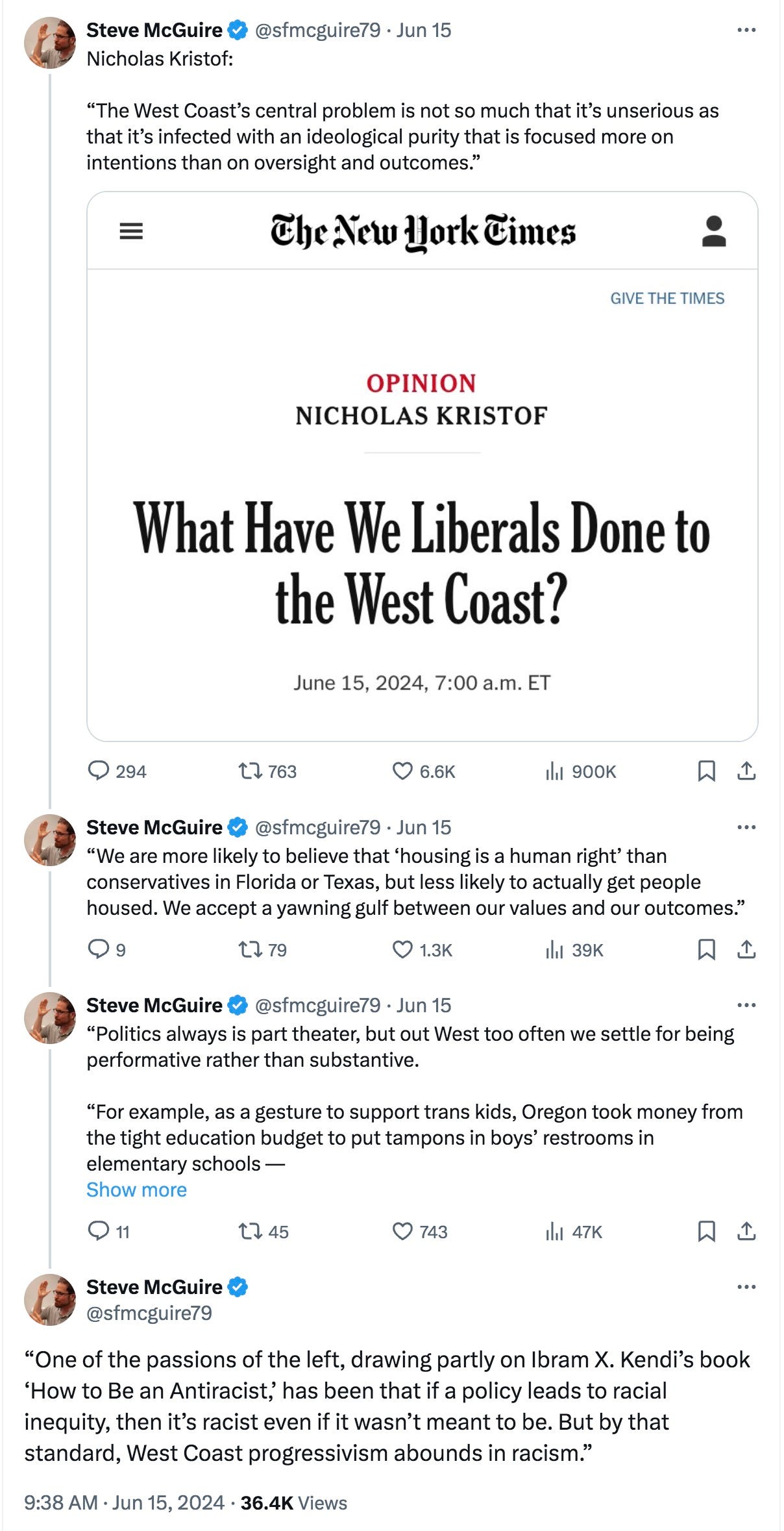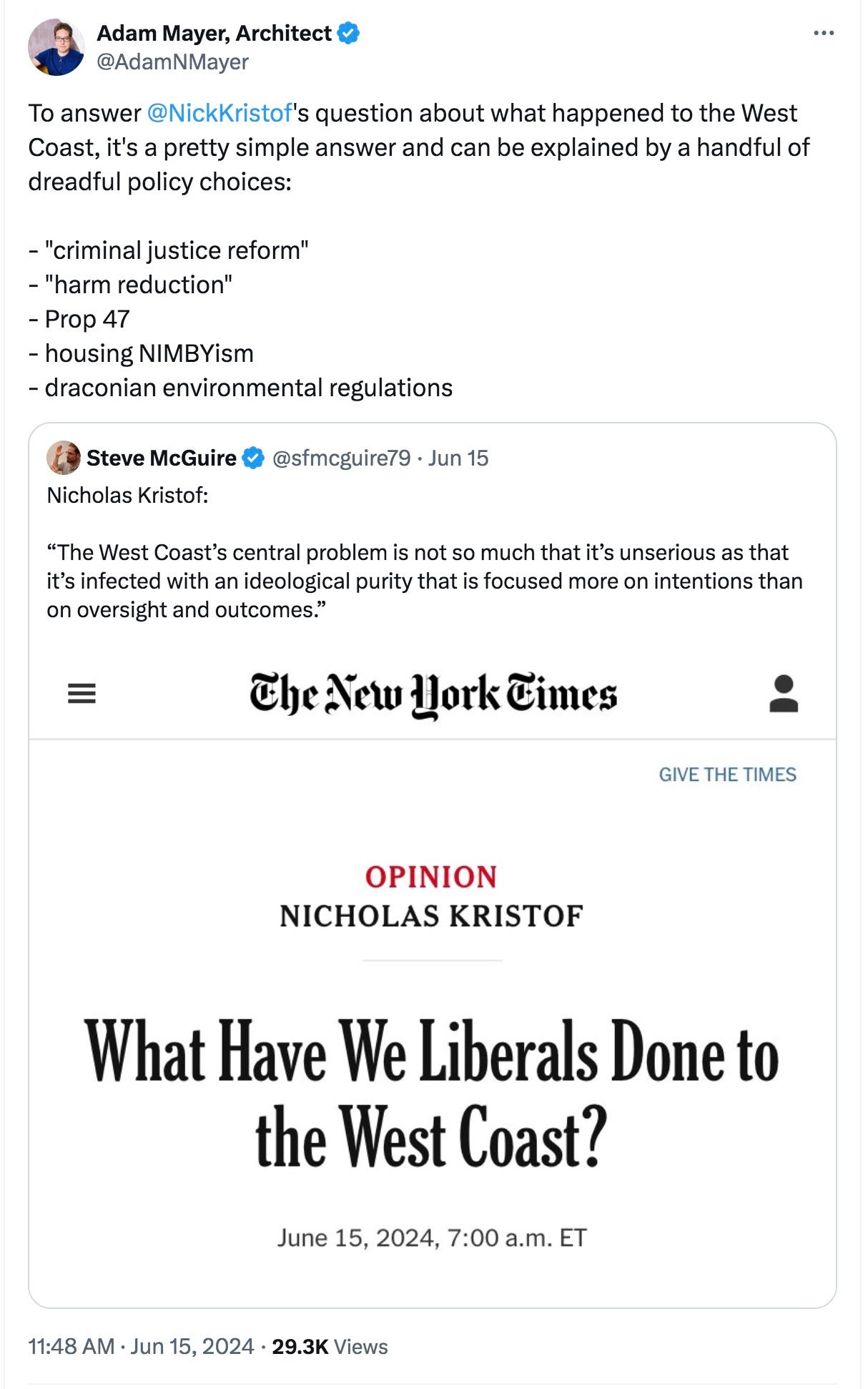E-Pluribus | June 18, 2024
The state of American Integralism; subversive public school curriculum; and truth in a post-truth age.
A round-up of the latest and best musings on the rise of illiberalism in the public discourse:
Kevin Vallier: The Rise and Fall of American Integralism
While driven by political and economic considerations as well, many of those who sought the New World were looking for a place where they could worship God according to the dictates of their own consciences. While protections for religious freedom remain strong in the United States, there has always been a tug of war over the degree of influence religion should play in a liberal society. At The Dispatch, Kevin Vallier examines the role integralism has played in this struggle.
Liberalism has faced criticism since it emerged in the late 18th century, whether from socialists who thought it downplayed solidarity, fraternity, and equality, or from conservatives who considered it harmful to traditional institutions like the family, the local community, and the Church. But by the end of the 20th century and into the 21st, liberalism had seemingly defeated its opponents. Almost everyone in the West defended liberal institutions. Take the 2012 U.S. presidential election: Mitt Romney was no illiberal right-winger, and Barack Obama was never a socialist. They both were—to different degrees, certainly—liberals.
Things changed in 2016. Suddenly, immigration restrictions and aggressive right-wing approaches to the culture war became influential, if not dominant, in many liberal democracies. Culture trumped economics. In the U.S., questions of identity took over the “national conversation” that health care reform had occupied a few election cycles prior. The political right—now content with a large welfare state and eschewing fiscal discipline—started winning elections.
These political changes brought in a new generation of anti-liberals, including some who offered radical alternatives to the liberal order. First among these post-liberals were the Catholic integralists, a group who, among other things, holds that the Church can authorize and direct the state to support it with certain policies, even to the point of backing up Church law with civil penalties.
[. . .]
According to integralism, God authorizes the Church and the state with distinct divine missions. The Church is responsible for the supernatural/spiritual good of the baptized and the Great Commission (Jesus Christ’s mandate to spread the Gospel to all nations), while the state promotes the temporal common good among the people. Though many Christians affirm these two doctrines, a third condition sets integralism apart: Since God ordained the Church and state, there must be some proper unity or integration between them. They must generally respect each other’s sovereignty and work together, but the state must defer to the Church in some cases of conflict or disunity.
[. . .]
The election of Donald Trump changed the [integralist] movement. While British integralists continued their largely academic work, American integralists saw an opportunity to make integralism political. Some of them, such as University of Dallas Professor Gladden Pappin, regarded Trump as a blunt tool to defeat secular liberalism and—according to interviews I conducted for my recent book on Catholic integralism and similar religious, anti-liberal doctrines—encouraged fellow travelers to become more politically engaged. Sohrab Ahmari, a young and charismatic journalist, became Catholic and joined their ranks. Most importantly, the integralists converted Adrian Vermeule, a professor at Harvard Law School who single-handedly gave the movement some clout.
This new generation of “right-integralists” began a state-facing project. They aimed to hasten the end of liberal government and build an integralist state in the ashes. Their reputation spread (though not always positively) and their numbers expanded.
[. . .]
[W]hat might fellow traditional fusionists learn from the rise and fall of the American integralists?
[. . .]
Each of the various subgroups of the fusionist coalition can refocus its efforts today. Libertarians should focus less on their internal culture war and more on preserving free institutions from decay by statist ideologues. Social conservatives should devote their energy to reevangelizing the country and persuading people of their views, especially on abortion. And those concerned with American military power and international influence must understand that figures like Vladimir Putin and Xi Jinping have become more aggressive because they see the U.S. as falling apart and at war with itself.
But more fundamentally, for a new fusionism to arise today, its members will have to coalesce around a new common threat—and in our moment, it’s one not from outside the United States but from within. The greatest threat to liberalism and our constitutional order today arises from declining social and institutional trust and from an extreme, unproductive political polarization. The new fusionism must therefore better understand the moral principles and social science that shapes political polarization. It should seek how to improve institutional and social trustworthiness and remove the incentives that lead to more polarized institutions. Why? Because it’s hard to feel comfortable allowing others to be free if we think they are untrustworthy radicals.
Reads the whole thing.
Robert Pondiscio: How Public Schools Became Ideological Boot Camps
Given their role in developing the worldview of the next generation, teachers face justifiable scrutiny in how and what they teach. Robert Pondiscio at The Free Press says that too often what public school teachers actually communicate to their charges receives little scrutiny from the institutions that employ them.
[H]ow can public schools at once be hotbeds of radicalism and “woke” indoctrination, yet produce students who are so poorly informed about the radical causes they ostensibly espouse?
The answer has a lot to do with one of American education’s dirty little secrets: on any given school day in nearly every public school in the country, curriculum materials are put in front of children that have no official oversight or approval. It’s true that schools might have a state- or district-adopted curriculum, but that doesn’t mean it’s getting taught. Nearly no category of public employee has the degree of autonomy of the average public school teacher—even the least experienced ones. Teachers routinely create or cobble together their own lesson plans on the widely accepted theory that they know better than textbook publishers what books kids will enjoy reading and which topics might spark lively class discussions.
[. . .]
This ungoverned mess is how the majority of high-profile curriculum controversies happen.
Earlier this year, The Free Press’s Francesca Block broke news that PS 321 in Brooklyn, New York, sent kids home with an “activity book” promoting the tenets of the Black Lives Matter movement, including “queer affirming,” “transgender affirming,” and “restorative justice.” The book was not authorized for classroom use either by the NYC Department of Education or Brooklyn’s Community School District 15. It appears to have begun its journey into students’ backpacks at the massive “Share My Lesson” website run by the American Federation of Teachers, the nation’s second largest teachers union.
[. . .]
The advocacy group Parents Defending Education has documented over a thousand incidents of schools teaching lessons on race, gender, or other hot-button issues that parents deemed inappropriate or upsetting. They are seldom traceable to formally adopted school curriculum. But there are 75 different lesson plans and resources for conducting “privilege walks” and more than 100 lessons and resources on “preferred pronouns” at Teachers Pay Teachers, another lesson sharing megasite.
Prior to legislative efforts to ban the teaching of critical race theory in public schools, there were only three school districts in the country known to have expressly authorized teachers to use the New York Times 1619 Project in lesson plans: Chicago, Buffalo, and Newark, New Jersey. However, the Pulitzer Center, which partnered with the Times to produce 1619 Project classroom materials, claimed to have “connected curricula based on the work of [Nikole] Hannah-Jones and her collaborators to some 4,500 classrooms”—another illustration of the yawning chasm between curriculum that is officially adopted and what actually gets taught.
Read it all here.
Martin Gurri: Truth Follows Function
Truth, facts, disinformation, misinformation - it’s difficult to avoid a daily media barrage of charges and countercharges about who is right and who is wrong. At Discourse Magazine, Martin Gurri writes about the nature of truth and the individual’s responsibility to sift through all the chaff to find the answers.
To ask, “Is this information right or wrong?” is to be plunged instantly into the struggle of frameworks and the twisting labyrinth of post-truth. To ask, “What is this information for?” begins a trail of explanations that could, with luck, lead to understanding.
[. . .]
The pandemic was a post-truth event. Predictably, it triggered a sociopolitical free-for-all. Science was made into a weapon with which to terrify an unruly public, and the experts, a proud but obscure clique, suddenly found themselves celebrated as leading warriors in that conflict. From the lockdowns and school closures to the censorship of social media, every mandate they ordained was an exercise in arbitrary power.
The scientific method rejects authority and invites criticism. During the pandemic, this was turned on its head, as science was worn as a mantle of authority and invoked to crush dissent. The practice of science is supposed to be neutral and impersonal. The experts and their political patrons claimed science as personal property: They aspired to a monopoly of truth. “I represent science,” said Fauci. “We own the science, and the world should know it,” said a United Nations dignitary. “We will continue to be your single source of truth,” said the prime minister of New Zealand. “Unless you hear it from us, it is not the truth.”
[. . .]
How can we escape the mass delusions enabled by post-truth? A therapist would prescribe a return to reality—but the interpretation of reality is precisely what is in dispute. We have to learn to orient ourselves inside the labyrinth.
At the individual level, we should remember that the function of moral judgment isn’t to represent reality but to shape it. We should engage with the assumptions, not the conclusions. The most fruitful response to “Trump is an authoritarian” and other such affirmations of doctrine is “What do you mean by that, exactly?”
The objective must be a modest one: to understand our differences. The reaction, almost certainly, will be fear and fury. Failure to agree unconditionally with “settled” judgments will unleash the convulsive forces of a psychotic society, and the risks—especially for those with something important to lose, like a job—aren’t trivial. But the choice is fairly stark: Either we persist or we submit. If we are too cowardly to defend truth as we understand it, we will get whatever untruth a sickly system sends our way. The virtue desperately needed at the moment isn’t empathy or tolerance but courage.
At the political level, we must boot out of office the miniature despots who aim to control opinions and conversations by the application of state power. The playing field of post-truth should never tilt in favor of official falsehoods. Censorship of digital media, whether directly by the government or indirectly by means of winks and nudges, should be considered an outrage. Science must break free from the grip of the ruling orthodoxies.
Read it all.
Around Twitter (X)
Via Jonathan Kay, David Frum introduces readers to Canada’s newest (and in his words, worst) law school:
Nicholas Kristof of the New York Times is doing some self-reflection on the creation of (what some conservatives have called) the left coast:
And finally, this one just keeps coming back.




